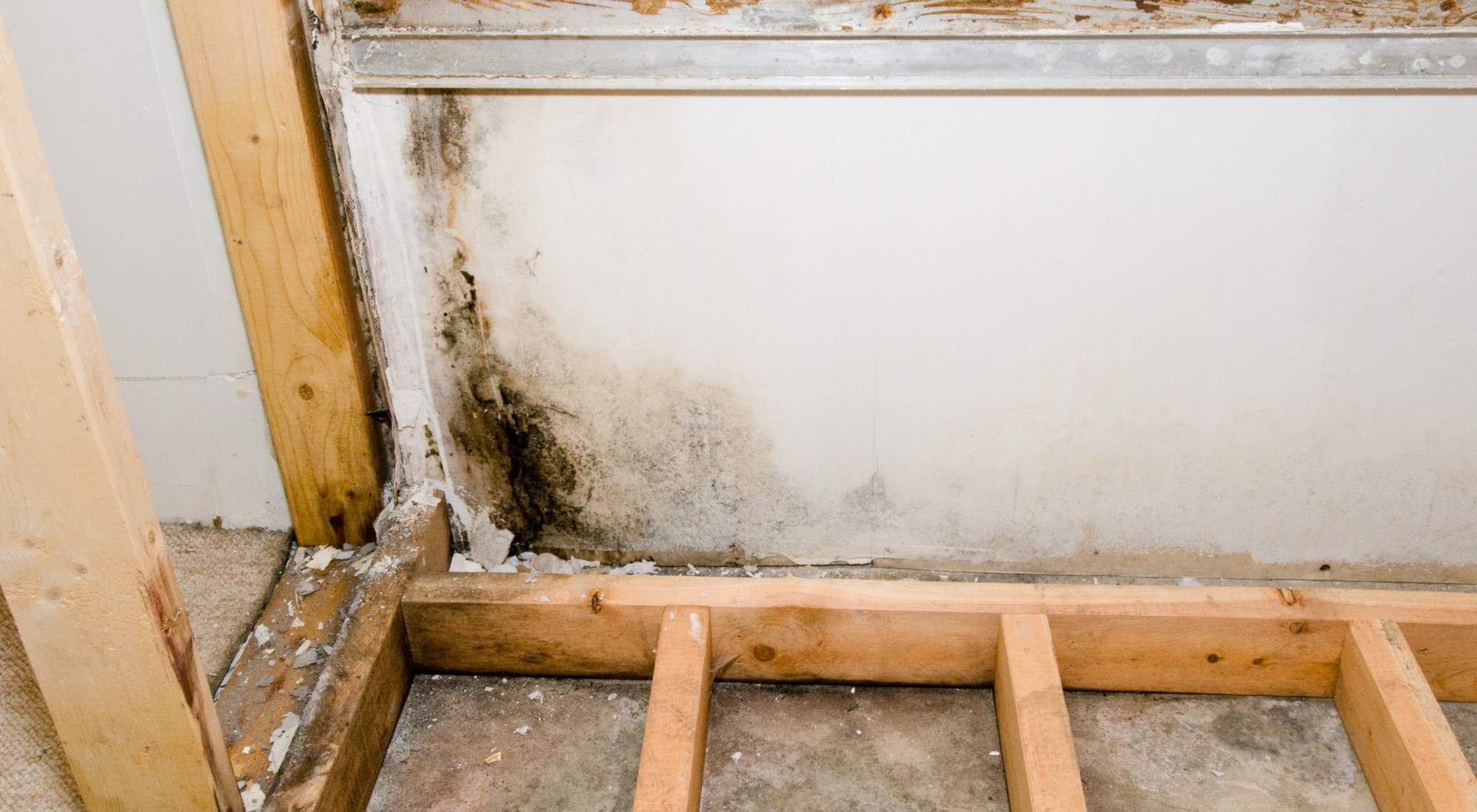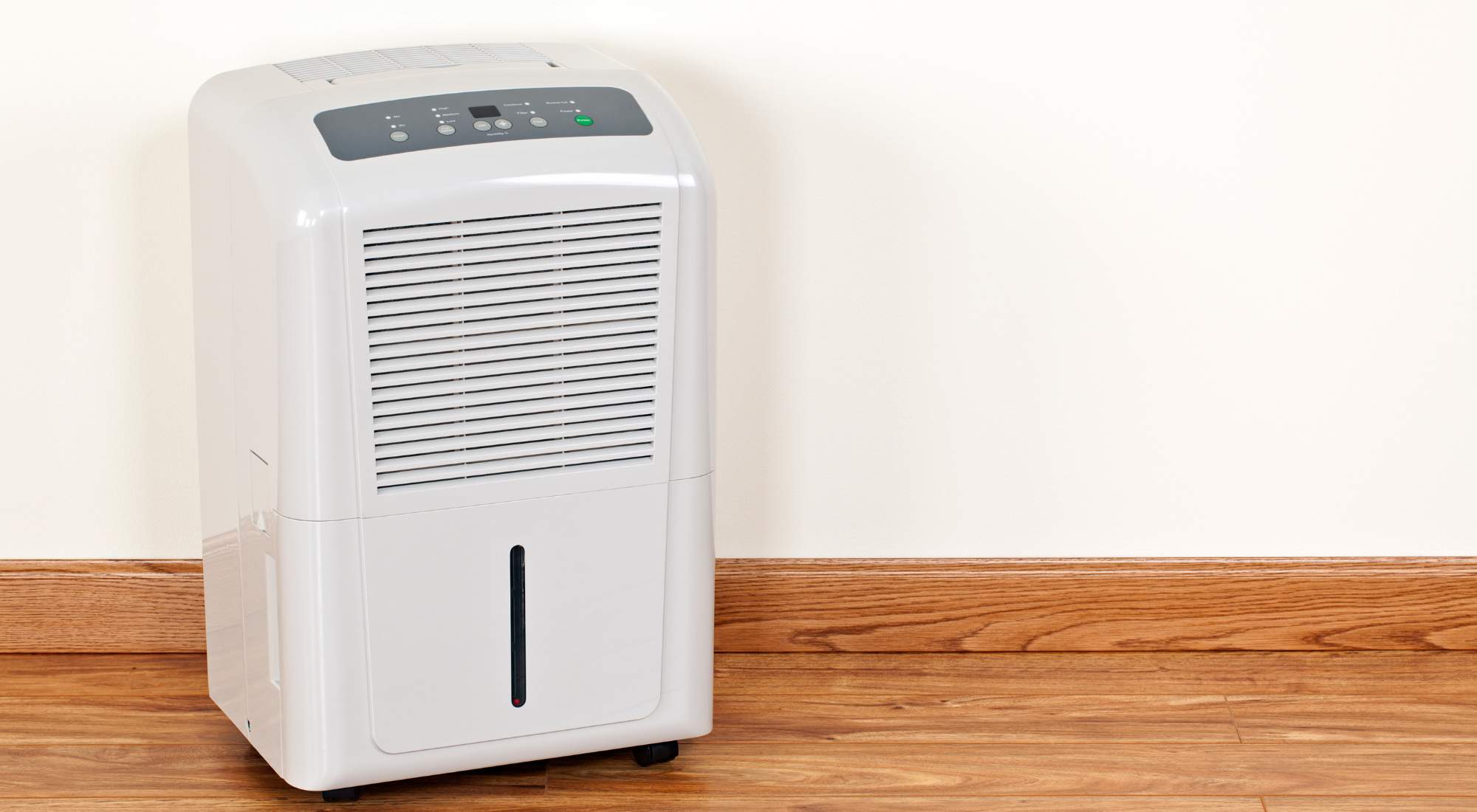Beneath your home lies a hidden realm. A place where darkness and dampness conspire together to create the perfect breeding ground for the nastiest of guests — mold.
While your basement may be the perfect space for the playroom, extra bedroom, or storage space, it may also be living a double life as a prime location for mold growth.
If you’re wondering how to prevent mold in your basement, have no fear.
In this article, we’ll unveil the secrets to banishing mold from your basement, so you can bid farewell to the mustiness lurking below and reclaim your downstairs as a clean, fresh space.

Table of Contents
- Why Does My Basement Keep Getting Moldy?
- 7 Ways To Prevent Mold From Growing In Your Basement
- Will a Dehumidifier Help With Mold in the Basement?
- What Kills Mold in a Basement?
- Pure Environmental Can Help Treat and Prevent Mold in Your Basement
Why Does My Basement Keep Getting Moldy?
There are two main problems that cause mold to grow in basements:
- Excess moisture, either inside or outside the house
- The lack of proper ventilation or airflow
The bottom line is this: If you don’t want mold in your basement, keep moisture out — while at the same time creating a source of airflow. This way, if there is moisture in your basement, it gets moved around and doesn’t have the chance to settle onto surfaces.
Most often, mold grows in a basement because a moisture source is present, such as a leaky foundation or condensation from appliances. When you ensure that your basement is free of any moisture by providing airflow and a source of ventilation, you’ll help create an environment where mold is unable to thrive.
Outside Sources of Moisture
Outside moisture sources you’ll want to be aware of and prevent if you want to keep mold from growing inside your basement include things like
- Surface water
- Rain
- Snowmelt; and
- Flooding
Water may also find its way into your basement through an underground spring or stream.
Inside Sources of Moisture
Interior water sources may also contribute to mold growth in a basement. You will want to be sure to keep an eye out for moisture that may be coming from:
- Leaky plumbing
- Excess humidity caused by an electric dryer, humidifier, or cooker
- Plants
- Laundry systems
- New plaster or concrete
7 Ways To Prevent Mold From Growing in Your Basement
Are you ready to put an end to a moldy basement once and for all? Here are our top seven tips for how to prevent mold from growing in a basement.
#1: Ensure Proper Drainage
As you are trying to determine how to prevent mold in your basement, the first thing to do is to ensure you have a good drainage system around the perimeter of your home.
Was the drainage system properly installed around window wells to keep moisture from running toward your house? Check your gutters and downspouts each year to keep them free of leaves and debris. If they are clogged, they may be allowing water to run straight into your basement.
As a general rule, most basements aren’t built on flat terrain, meaning that drainage is often a potential problem. However, if your home was built into a hill and your drainage system was properly installed, you should be able to:
- Divert the water source
- Control roof runoff; and
- Manage surface water to avoid keeping it from entering your basemen
At Pure Environmental, we have found that improperly installed drainage systems in homes with basements are the largest contributors to basement moisture. Contact us today to learn more about what our team can do to help prevent mold in your basement.
Consider Having an Internal French Drain System Installed
In some areas, like the PNW, it’s not necessarily a good idea to finish your home’s basement.
With some areas seeing upwards of 200 inches of rainfall each year, unless your home has an exceptional ventilation and moisture drainage system, it is likely that you will eventually get mold in the walls of your basement. This is especially true if you own an older home.
Installing an internal French drain system can be a great option to help your finished basement stay dry and mold-free. This specialized drain is cut into the concrete around the outside of your home to capture any moisture and keep it from going into the basement.
The team at PURE Environmental has experience installing internal French drain systems throughout the Pacific Northwest and we would be happy to share more about how this option may be right for your home.
Contact us today for your free estimate.

#2: Maintain Your Home To Deter Moisture Entry
Staying on top of home maintenance is always a critical part of owning a home — especially when it comes to preventing mold in your basement.
Always take immediate action to fix any:
- Cracks in your foundation
- Leaky pipes: and
- Unsealed doors and windows
These troublesome spots can create easy entry points for water to make its way into your basement and lead to mold.
If these locations have already been professionally sealed, and you find that your basement is still collecting water, get in touch with a basement waterproofing company to determine the source of the excess moisture.
#3: Remove Any Unnecessary Sources of Humidity and Possible Mold Growth
Many homeowners don’t realize that certain things they may leave in their basements can cause excess humidity, and potentially create the perfect environment for mold to grow.
To keep this from happening, it is best to remove the following things from your basement:
- Plants
- Wet towels
- Firewood
It’s also a good idea to avoid having carpet or wood floors in your basement. To discourage mold growth, tile or concrete are usually the best options for basement flooring.
#4: Regularly Inspect Your Laundry System
Another step you will want to take to prevent mold in your basement is to do a quarterly examination of your laundry system.
This includes a regular inspection of your:
- Washer, to ensure it is not leaking
- Dryer vent, to be sure it is not coated in lint and is properly allowing the heat to escape your home
Also, remember to avoid leaving wet laundry lying around for too long and consider line-drying any necessary items outside or upstairs instead.
#5: Ensure Appropriate Ventilation and Air Exchange
Next, examine your basement’s air exchange system. As critical as this step is, many basements are lacking in this vital area.
Having ventilation and air exchange in your basement will not only improve the air quality, but it will also reduce the moisture content of the air.
Your source of ventilation and air exchange can be as simple as running an exhaust fan that pulls air out of your basement to the outside, which then pulls air into the basement from other parts of your home.
Consider Having an Energy Recovery Ventilation (ERV) System Installed
You may want to think about having a more sophisticated air exchange/energy exhaust system in the form of an energy recovery ventilation system.
Also known as ERVs, these systems exchange air while also exchanging energy.
Energy recovery ventilation systems are equipped with two fans. One of them draws fresh air into your home and the other pulls the stale air out. As these two streams of air pass through the ERV system, a heat exchanger within the system transfers heat and moisture from one air stream to the other.
While energy recovery ventilation systems can be expensive to buy, install, and maintain, they save you money in the long run by cutting your overall energy costs.
#6: Keep Your Basement Clean and Uncluttered
Walk into most basements, and you’ll find at least one area that is used for storage. Often piled high with boxes or clutter, these areas frequently suffer from low airflow, which can encourage mold growth.
If you have excess items that you are storing in your basement, consider placing them in plastic tubs to keep moisture out. If necessary, regular cleaning of the outside of the tubs can help take care of any accumulating surface mold.
#7: Insulate Your Water Pipes
Taking the time to insulate your basement’s water pipes is another great way to prevent mold in your basement. This can be especially critical during the winter months when uninsulated pipes can freeze and burst.
If a broken basement pipe goes unnoticed for any period of time or isn’t dealt with right away, the resulting water damage can quickly lead to mold.

Will a Dehumidifier Help With Mold in the Basement?
Yes! Dehumidifiers pull moisture from the air in your basement and are a great tool for helping to combat moisture.
Dehumidifiers are especially helpful with combatting moisture caused by washers and dryers.
What Kills Mold in a Basement?
If you already have mold in your basement that is causing health problems or bad odors, the best option is to call in the professionals like the team at PURE Environmental.
Our proven mold remediation services will do the trick and help you win the battle against basement mold.
Pure Environmental Can Help Treat and Prevent Mold in Your Basement
If you have a basement in the Pacific Northwest, you may very well be dealing with nasty mold.
But don’t worry — At PURE Environmental, we deal with moldy basements every day.
Our experienced team has the know-how and tools to not only eradicate the imposter (along with its musty odor and unsightly stains), but we can also help you get to the source of the mold — and keep it away for good.
We use PurAyr™ technology, a powerful air and surface decontamination tool that is designed to safely eradicate mold. PurAyr™ rapidly oxidizes and neutralizes air and surface contaminants, eliminates odors, and improves indoor air quality.
Even better, the process is:
- Residue-free
- Environmentally sound; and
- Safe for your belongings, including sensitive electronics, leather, and antiques
Contact PURE Environmental today for your free estimate!
Recent posts
- Pros and Cons of Heat Treatment for Bed Bugs: Things To Consider When Reviewing Your Options for Remediation
- How To Get Rid of Pet Odor in Your House
- Clearing the Air: How To Clean Walls From Cigarette Smoke
- Deodorizing Your Living Space: How To Get Rid of a Musty Smell in Your House
- How Do You Get Rid of Mold in Your Attic? Tips from the Professionals
Recent Posts
- Pros and Cons of Heat Treatment for Bed Bugs: Things To Consider When Reviewing Your Options for Remediation
- How To Get Rid of Pet Odor in Your House
- Clearing the Air: How To Clean Walls From Cigarette Smoke
- Deodorizing Your Living Space: How To Get Rid of a Musty Smell in Your House
- How Do You Get Rid of Mold in Your Attic? Tips from the Professionals
